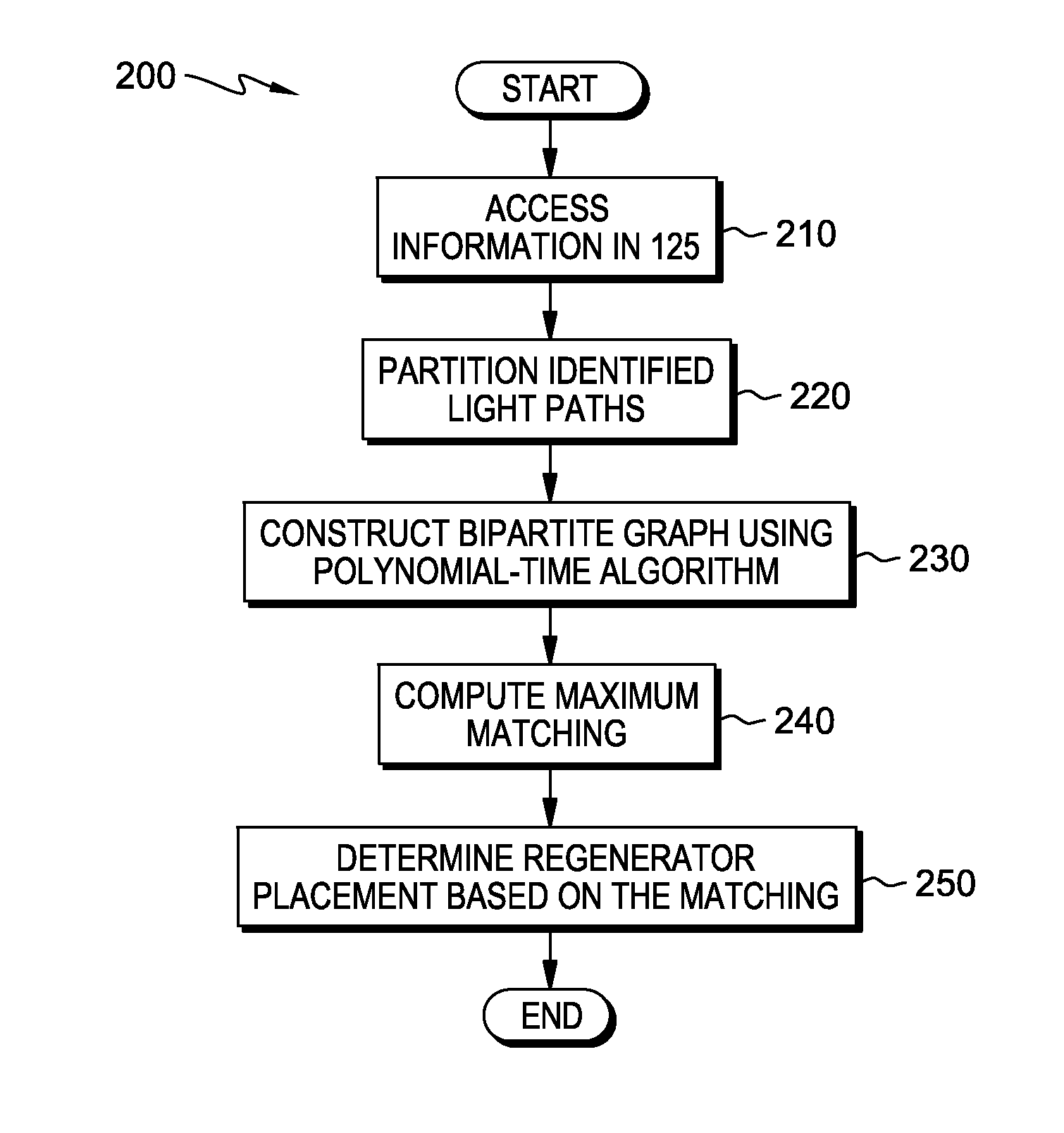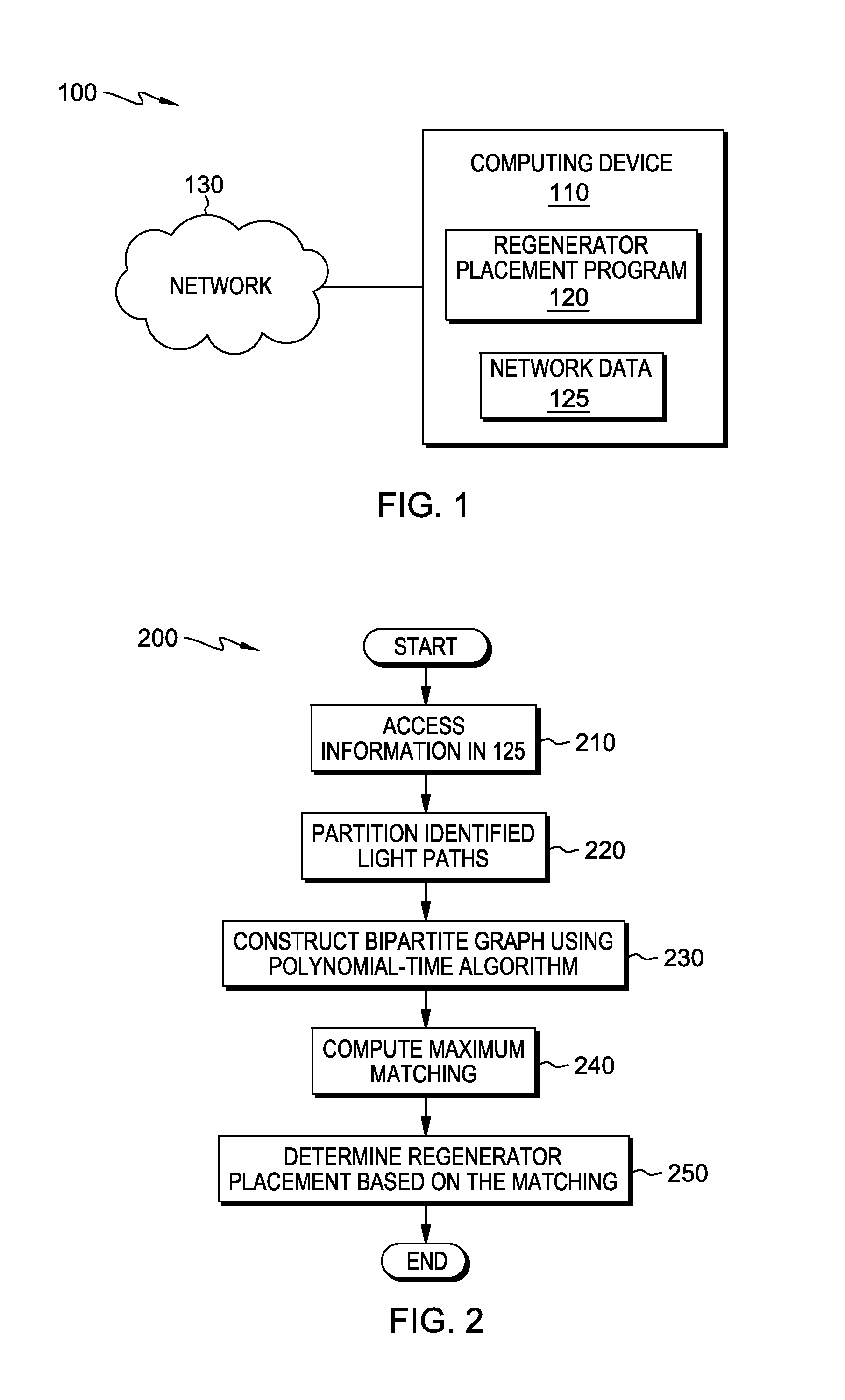Regenerator placement using a polynomial-time algorithm
a technology of polynomial time and placement algorithm, applied in the field of optical network, can solve the problem that regenerators can add substantial cost to the communication system
- Summary
- Abstract
- Description
- Claims
- Application Information
AI Technical Summary
Benefits of technology
Problems solved by technology
Method used
Image
Examples
Embodiment Construction
[0010]In computer science, the time complexity of an algorithm quantifies the amount of time taken by an algorithm to run as a function of the length of the string of data representing the input. The time complexity of an algorithm is commonly expressed using big O notation, which excludes coefficients and lower order terms. When expressed this way, the time complexity is said to be described asymptotically, i.e., the time complexity increases as the input size goes to infinity. For example, if the time required by an algorithm on all inputs of size n is at most 5n3+3n, the asymptotic time complexity is O(n3).
[0011]Time complexity is commonly estimated by counting the number of elementary operations performed by the algorithm, where an elementary operation takes a fixed amount of time to perform. Thus, the amount of time taken and the number of elementary operations performed by the algorithm differ by at most a constant factor. Since an algorithm's performance time may vary with di...
PUM
 Login to View More
Login to View More Abstract
Description
Claims
Application Information
 Login to View More
Login to View More - R&D
- Intellectual Property
- Life Sciences
- Materials
- Tech Scout
- Unparalleled Data Quality
- Higher Quality Content
- 60% Fewer Hallucinations
Browse by: Latest US Patents, China's latest patents, Technical Efficacy Thesaurus, Application Domain, Technology Topic, Popular Technical Reports.
© 2025 PatSnap. All rights reserved.Legal|Privacy policy|Modern Slavery Act Transparency Statement|Sitemap|About US| Contact US: help@patsnap.com



